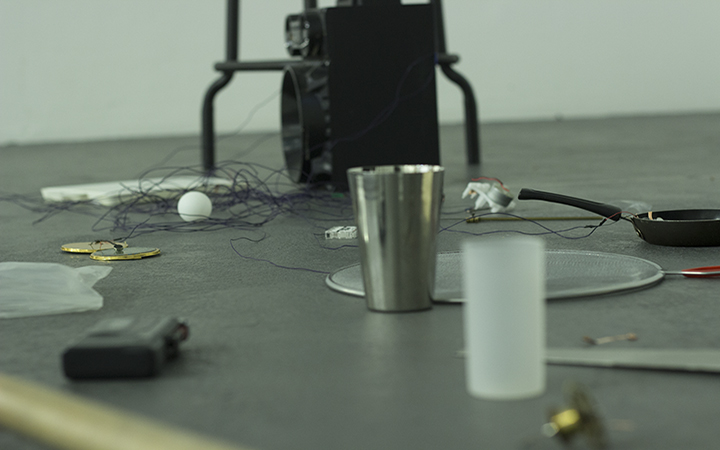Invisible Agencies
Camila Colussi, Qianhui Fan, Tianyu Xiao
------------------------------------------

The present project reflects on non-anthropocentric approaches to relate with non-human agents. Our discussion is an effort to understand the diversity of agents in this world as different kinds of matter that present invisible energies for our eyes. Maybe, what we have called as non-living matter has its particular living existence.
Theorists, artists, scientists, intellectuals and others. A wide discussion about the called "Non-Human Turn" is in development. From Manuel DeLanda’s work on assemblage theory (DeLanda 2006) to Bruno Latour’s development of Actor-Network Theory (Latour and Callon 1981); from a recent renewed interest in panpsychism to the increasing popularity of Speculative Realism (Bryant et al. 2011); from the vibrant materialism of Jane Bennett (Bennett 2010) to the “nonhuman turn” conference that have started to pop up everywhere around the globe, academia seems to be firmly en route to think a world in which we are not present or, at least, not in control.
We believe technologies are changing our sensibilities and they could open a path to empathize and relate with other agents. Humans and non-humans. Living and non-living. Then, it could bring a possibility to see/feel/ connect with realities or situations that are invisible to our eyes and make us notice other kinds of agencies.
If we consider that computers are made by non-living matter, "objects", "things", and these computer have the potential of intelligence; maybe we are misunderstanding what non-living matter implies. Maybe objects are more than objects. Then, we should start talking about them as other kinds of agencies with other forms of energies.
Jane Barnett suggests the idea of Thing-Power, in which she looks at things rather than a fixed stability of materiality, but he looked at them as vibrant materials that is act more like a force or energy. Bennett repeatedly describes her project as the attempt “to give VOICE to a thing-power”. By this, she means “the task of speaking a word for vibrant matter?” As Bennett says, “stuff exhibited its thing-power: it issued a call, even if I did not quite understand what it was saying. At the very least, it provoked effects in me”. (Insofar as humans are things they also speak affectively, but subjects can’t hear affections. So learning to be receptive to thing-power is learning to ‘hear’ affect.) In this case, we took the vibration of sound, that is subtle and unnoticeable in addressing this idea of invisible agencies.
ARTEFACT
By taking the title of Jane Bennett’s book “Vibrant Matter“ literally, we made a scene of daily life objects and add vibrating motors to them. So, we got vibrating objects making a lot of noise. We didn’t want to “animate” the objects but see them vibrate. At the end, it turned into a sound provocation. Finally, we included a distance sensor that would stop the movement of the motors as humans get close. We wanted to point out the frustration of not being able to see the invisible. Moreover in the video, we made some “blur” shoots to imagine those objects vibrating and merged with the motors. In other words, speculating about the vibrating matter.
Podcast
References
Books
Barnet, Janne. "Vibrant matter."
Braidotti, Rossi. "The PostHuman".
Braitenberg, Valentino. "Vehicles; experiments in synthetic psychology."
Haraway, Donna. "Cyborg Manifesto".
Latour, Bruno. "We have never been modern".
Sadin, Eric. "Augmented Reality".
Schrodinger, Erwin. "What is life?"
Artists
David Tudor, "RainForest".
David Weiss, "The way things go".
INTERSPECIFICS.
Kristina Kubrik, "Electrical walks".
Manuela Infante, "Vegetative State".
Takis.
Tristan Perich, "Breathing Portraits".
Yayoi Kusama.
YUYANG WU, "Breathing".






























































